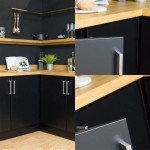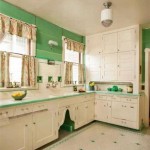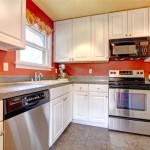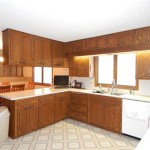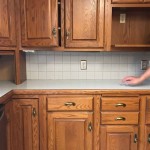Standard Sizes For Kitchen Base Cabinets
Kitchen base cabinets are the foundation of any kitchen design. They provide crucial storage and functionality, and having a good understanding of standard sizes is key to creating a cohesive and efficient layout. While there are many different manufacturers and styles available, there are also common standard sizes that help make the process of planning and installing kitchen cabinetry more streamlined.
Standard base cabinet dimensions are typically measured in widths, depths, and heights. The standard width for most base cabinets is 36 inches, although other widths, such as 12, 15, 18, 21, 24, 30, and 33 inches, are also common. The standard depth of base cabinets is 24 inches, but there are also shallower base cabinets, typically found in smaller kitchens. The standard height for base cabinets is 34.5 inches, but there are also taller base cabinets, which can be useful for maximizing storage space or creating the illusion of higher ceilings.
Key Considerations for Kitchen Base Cabinet Sizes
Understanding the standard sizes for base cabinets is a good starting point. However, other factors need to be considered when designing your kitchen layout. These include:
Countertop Depth
Countertop depth is another crucial factor in determining base cabinet dimensions. Standard countertop depth is 25.5 inches. This dimension needs to be considered when choosing the depth of your base cabinets to ensure that there is enough overhang for your countertop and a comfortable work area.
Sink and Appliance Considerations
If you’re planning to have a sink or large appliances like a dishwasher in your kitchen, you'll need to choose base cabinets that are compatible with the dimensions of these appliances. You’ll need to consider both the width and the depth to ensure that your cabinets have enough space to accommodate the appliances and ensure that you have the necessary clearance for doors to open and close properly.
Cabinet Door Styles
The style of your cabinet doors can also affect the dimensions of your base cabinets. For example, if you have a traditional kitchen with raised panel doors, you'll need to ensure that there is sufficient space for the doors to open and close without hitting anything. You'll also need to ensure that the doors fit within the overall dimensions of the cabinet.
Understanding Standard Base Cabinet Types
There are various standard base cabinet types, each designed for specific purposes.
Standard Base Cabinets
These are the most common type of base cabinet and are designed for general storage. They typically have shelves, drawers, or a combination of both.
Sink Base Cabinets
Sink base cabinets are specially designed to accommodate a kitchen sink. They typically have a larger opening in the countertop to accommodate the sink basin.
Tall Base Cabinets
Tall base cabinets, also known as pantry cabinets, are typically 34.5 inches wide and 84 inches tall. They offer extensive storage space and are a popular option for pantries, food storage, or storing large appliances.
Corner Base Cabinets
Corner base cabinets are designed to fit into corners, making use of limited space. They are available in various configurations, including lazy Susan cabinets, blind corner cabinets, and pull-out corner cabinets.
Wall Cabinets
Wall cabinets are mounted to the wall above base cabinets. These are available in various sizes to accommodate different storage needs and styles. They are typically 12, 15, 18, 21, 24, 30, and 36 inches wide.
Base Cabinet Drawer and Shelf Configurations
The internal configuration of base cabinets can vary depending on the specific model and your needs. Standard configurations include:
Single Drawer Base Cabinets
Single drawer base cabinets have one large drawer, ideal for storing pots, pans, or other bulky items.
Double Drawer Base Cabinets
Double drawer base cabinets have two drawers, offering flexibility for storing different items.
Three Drawer Base Cabinets
Three drawer base cabinets provide even more storage space.
Base Cabinets with Shelves
Base cabinets with shelves are ideal for storing items that can be stacked, such as plates, bowls, or glassware.
Base Cabinets with a Combination of Drawers and Shelves
These cabinets provide the most versatility, allowing you to store a variety of items.
Choosing the Right Base Cabinet Size
Choosing the right base cabinet size is important to ensure that your kitchen is functional and looks great. Here are some additional tips:
Consider the size of your kitchen. If you have a small kitchen, you may want to choose narrower cabinets to maximize space. If you have a larger kitchen, you can afford to have wider cabinets to accommodate more storage space.
Think about your storage needs. If you cook a lot, you'll need more storage space for dishes, utensils, and ingredients. If you don't cook as often, you can get away with fewer cabinets.
Consider the style of your kitchen. The cabinet sizes and styles should complement the overall design of your kitchen.
Consult a kitchen designer or specialist for a more tailored approach to your kitchen layout and cabinet selection. Their expertise can help you maximize space and achieve the kitchen layout and functionality you desire.

Base Cabinet Size Chart Builders Surplus

Kitchen Base Cabinet Size Chart Builders Surplus Cabinets Sizes Espresso

Kitchen Cabinet Dimensions Size Guide

Kitchen Cabinet Dimensions

3ds Max Design Tutorials Using Basic Polygon Editing To Create A Base Cabinet
Guide To Kitchen Cabinet Sizes And Dimensions

The Ultimate Guide To Standard Kitchen Cabinet Sizes Unique Design Blog

Common Corner Cabinet Types And Ideas Superior Cabinets

Kitchen Sink Base Cabinet Everything You Need To Know

Woodcraft Custom Kitchen Cabinet Measurements
Related Posts

